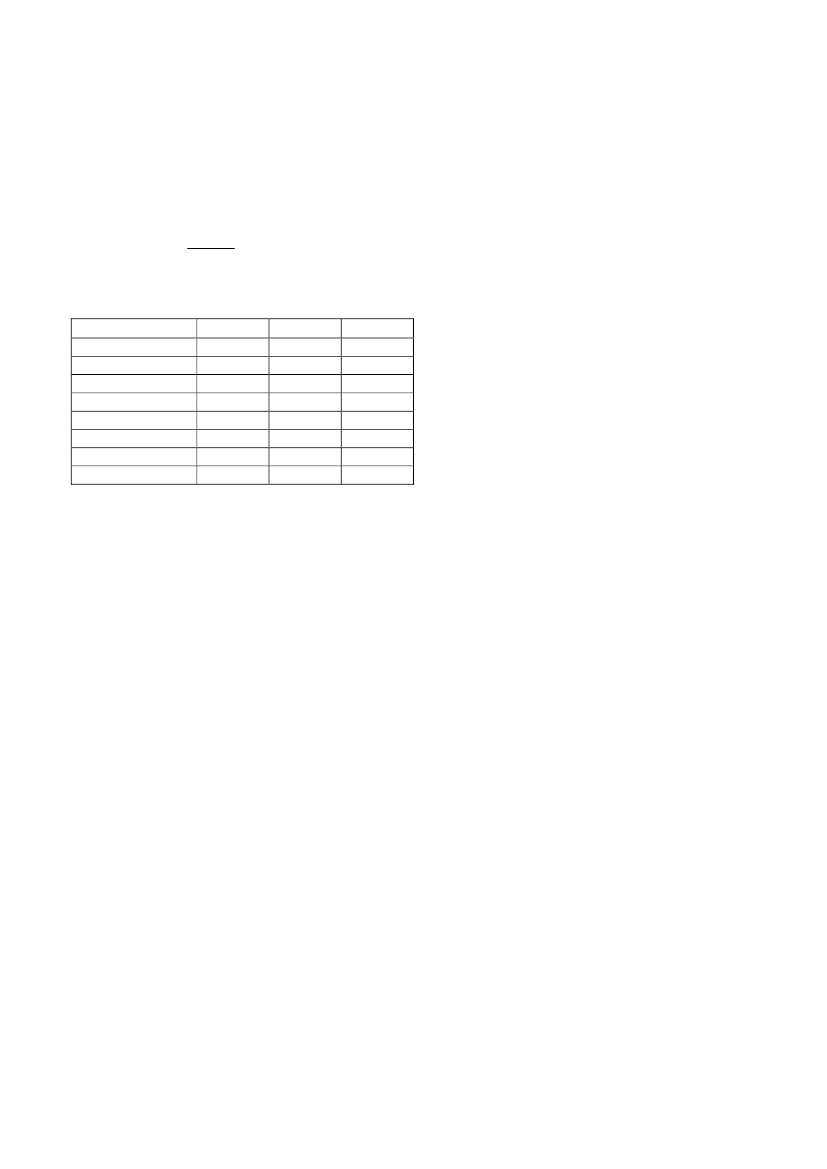Sundheds- og Forebyggelsesudvalget 2013-14
SUU Alm.del Bilag 268
Offentligt
Simplified upwind propagation model for
wind turbines
Model description by Birger Plovsing and Jørgen Jakobsen (based on manuscript to be
submitted to Noise Control Engineering Journal)
Input parameters
h
S
: source height (m)
d:
horizontal propagation distance (m)
u
10
: wind speed component 10 m above ground in the direction of propagation (m/s), negative
values in upwind
Fixed model parameters (cannot be changed)
h
R
= 1.5 m: receiver height
z
0
= 0.05 m: roughness length
t
0
= 10° C: air temperature
c(t
0
)
= 337,4 m/s: the sound speed at temperature
t
0
Calculation of
model parameter d’
Wind speed
u
(m/s) as a function of height
z
(m):
z
10
u
z
�½
u
10
ln
ln
z
z
0
0
Average sound speed gradient
Δ
c/
Δz
(s
-1
):
c u
h
S
u
h
R
�½
z
h
S
h
R
Effective sound speed
c
0
(m/s) at the ground (z = 0) in linear sound speed profile approximation:
c
c
0
c
t
0
u
10
10
z
1
PDF to HTML - Convert PDF files to HTML files
Relative sound speed gradient
a
(m
-1
):
c
c
0
a
�½
z
Distance to shadow zone d
SZ
(m):
d
SZ
2
h
S
2
h
R
a
a
Horizontal propagation distance relative to shadow zone distance
d’
(dimensionless):
d
�½
d
d
SZ
Method for determining the A-weighted upwind ground effect
ΔL
u
in excess
of the A-weighted downwind ground effect
ΔL
g
given in
Vindmøllebekendtgørelsen :
The excess A-weighted upwind ground effect
Δ
L
u
in dB is calculated by:
15
if h
S
15
h
S
�½
h
S
if
15
h
S
70
70
if h
70
S
h
15
k
1
�½
S
0.55
220
h
15
k
2
�½
S
2 .1
50
0
if d
k
1
d
k
1
if k
1
d
k
2
L
u
�½
15
k
2
k
1
15
if d
k
2
Method for determining the upwind low frequency ground effect
ΔL
uLF
in
excess of the one-third octave band downwind ground effect
ΔL
gLF
given in
Vindmøllebekendtgørelsen :
For one-third octave band frequencies below 31.5 Hz
Δ
L
uLF
is equal to 0 dB.
2
PDF to HTML - Convert PDF files to HTML files
In the frequency range 31.5 Hz to 160 Hz
Δ
L
uLF
in dB is calculated by the following equation where
Δ
L
max
,
k
1
and
k
2
are defined in the table below:
L
uLF
0
if d
k
1
d
k
1
�½
L
max
if k
1
d
k
2
k
2
k
1
L
max
if d
k
2
Δ
L
max
-3
-6
-10
-14
-15
-15
-15
-15
k
1
3
2.3
2
1.7
1.6
1.5
1.45
1.35
k
2
5
5
5.2
5
4.3
3.6
3.2
3.05
Frequency (Hz)
31.5
40
50
63
80
100
125
160
3


